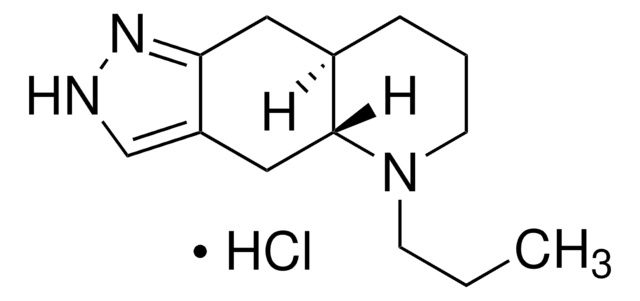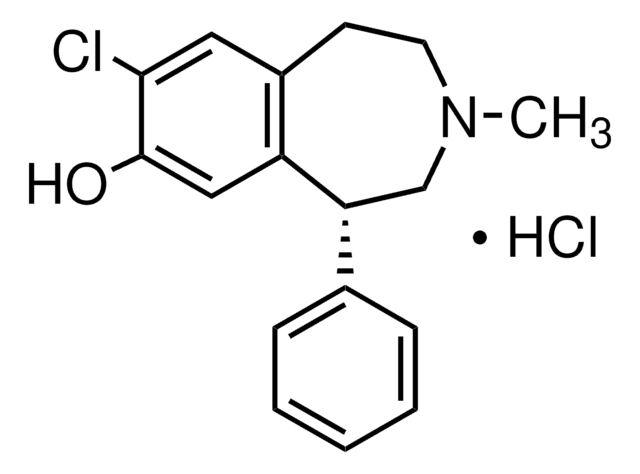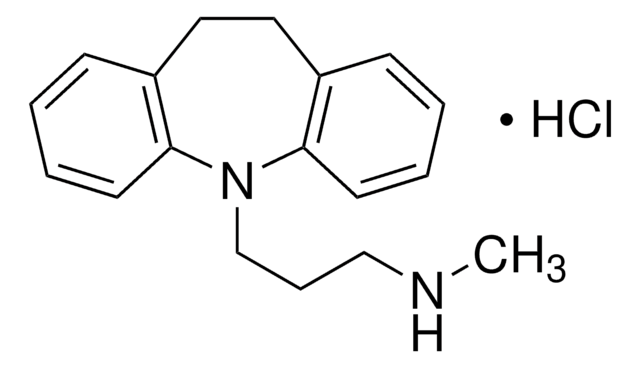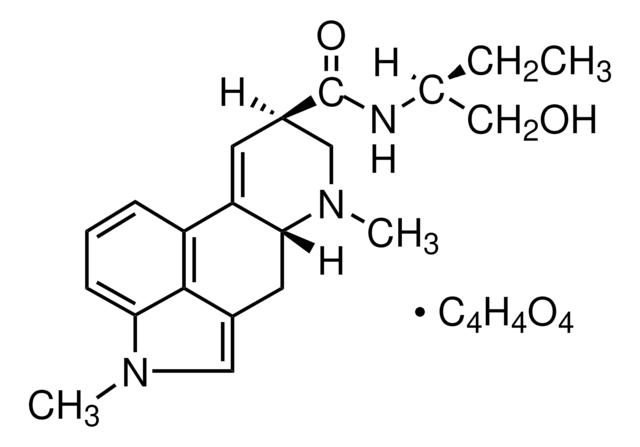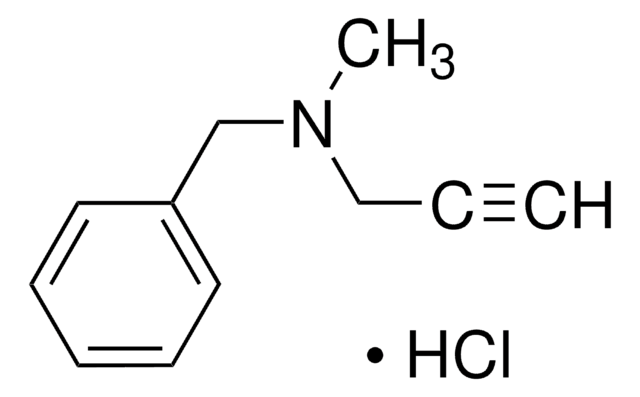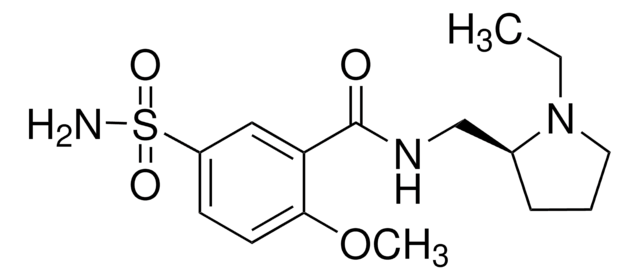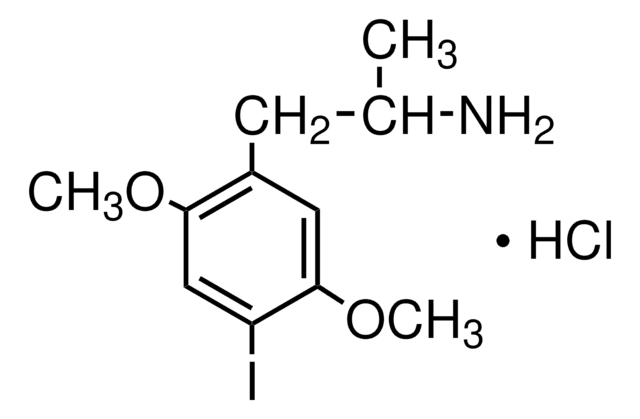D052
GBR 12909 dihydrochloride
solid, ≥98% (HPLC)
Synonyme(s) :
1-(2-[bis(4-Fluorophenyl)methoxy]ethyl)-4-(3-phenylpropyl)piperazine dihydrochloride
About This Item
Produits recommandés
Niveau de qualité
Essai
≥98% (HPLC)
Forme
solid
Couleur
white
Solubilité
DMSO: >5 mg/mL (Solutions freshly prepared daily)
Chaîne SMILES
Cl.Cl.Fc1ccc(cc1)C(OCCN2CCN(CCCc3ccccc3)CC2)c4ccc(F)cc4
InChI
1S/C28H32F2N2O.2ClH/c29-26-12-8-24(9-13-26)28(25-10-14-27(30)15-11-25)33-22-21-32-19-17-31(18-20-32)16-4-7-23-5-2-1-3-6-23;;/h1-3,5-6,8-15,28H,4,7,16-22H2;2*1H
Clé InChI
MIBSKSYCRFWIRU-UHFFFAOYSA-N
Informations sur le gène
human ... DRD1(1812) , DRD2(1813) , DRD3(1814) , DRD4(1815) , DRD5(1816)
Vous recherchez des produits similaires ? Visite Guide de comparaison des produits
Application
- to study its effects on LPS-induced mRNA expression on the proinflammatory cytokines in the mouse striatum
- to study its effects on neurotransmitter release in zebrafish brain
- in DA uptake assay in mice striatal fraction
Actions biochimiques/physiologiques
Caractéristiques et avantages
Code de la classe de stockage
11 - Combustible Solids
Classe de danger pour l'eau (WGK)
WGK 3
Point d'éclair (°F)
Not applicable
Point d'éclair (°C)
Not applicable
Équipement de protection individuelle
Eyeshields, Gloves, type N95 (US)
Faites votre choix parmi les versions les plus récentes :
Déjà en possession de ce produit ?
Retrouvez la documentation relative aux produits que vous avez récemment achetés dans la Bibliothèque de documents.
Notre équipe de scientifiques dispose d'une expérience dans tous les secteurs de la recherche, notamment en sciences de la vie, science des matériaux, synthèse chimique, chromatographie, analyse et dans de nombreux autres domaines..
Contacter notre Service technique